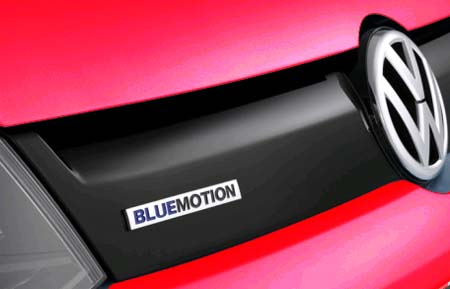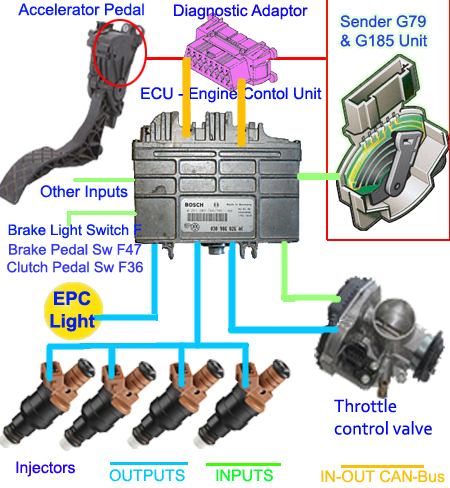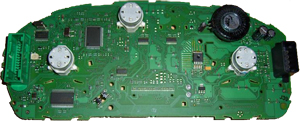VW DIY
In the not so distant pass, whenever something went wrong in your VW, Polo, Jetta, Passat, Audi, Seat or Skoda, you could do one of two things. Either take it to a VW specialist to have it checked out or you could fix it yourself, if you are a hands-on, DIY kind of person. Nowadays the latter option has faded away into obscurity. With the stream of problems VAG cars are having, many of us are in the dark regarding repairs. We make educated guesses, replace parts by substitution, often costing huge amounts of money for repairs and the fault still persists. Below I have out-lined some of the problems I have encountered and with any luck shed some light on the problems you've been having with your VAG car. But before I go any further you may be itching to ask "What is a VAG car?"Well, VAG stands for Volkswagen-Audi GMBH in Germany, also refers to Volkswagen Aktiengesellschaft or Volkswagen AG for short and Volkswagen-Audi Gelelschaft (Geleslschaft means Association). In essence, it's the same, exact and identical group. And any car manufactured or sold by them is referred to as a VAG car. Amongst these are, VW, Polo, Jetta, Passat, Audi, Skoda, Touran, Tauareg, Beetle, Tiguan, Golf, Porsche, Amrok, Rabbit, Bentley, Bugatti, Bora, Phaeton, Vento, Kombi, Transporter, Lupo and the Lamborghini, each one with a different engine with varying capacities with obscure three letter abbreviations like, BBX, AAF, AEX and APE amongst many others. However many of them have the same or similar Electronics Bosch Motronic system hardware with software ranging from ME 5.x to ME 7.x, with several support modules in common, networked to the OBD II / OBD2 (On-Board Diagnostic System ver. 2) or Can-Bus (Controller Area Network) standard.
 |
| The VW Polo 2007 with new Bluemotion technology can switch its engine off when it comes to a halt, yet plagued by the legacy VW EPC light problem. |
I've had the same results with my power steering which just wouldn't work after some work was done to my car and in the process the Power Steering Motor was disconnected. When it was reconnected the power steering was very stiff and difficult to steer. After going through the entire process of checking and back-tracking it still didn't work. Eventually, when the diagnostic tester was plugged in, two errors codes showed up. The first indicating that the +30V supply had dropped to an unreliable level and the second a power steering error. The first was because the battery was disconnected and the second was because the power steering plug was disconnected. After erasing the two error codes from the non-volatile memory, the power steering work perfectly normal.
I can assuredly say that I am not alone or rather that my car trouble is not unique, neither am I the only VW owner having car trouble (see previous blogs). It appears that my 2007 Polo Classic Highline shares most of the problems listed below with my fellow VW owners. There are probably hundreds if not thousands of other VAG car owners experiencing the same issues with their cars as I am experiencing with mine. Here are just a few of the problems that my fellow VW owners shared with me :-
"VW polo dashboard brake light stays on" / "EPC instrument fault indication light is on" / "VW polo warning lights on dashboard" / "VW polo classic is showing epc light, starting and dying" / "polo dashboard controls" / "VW polo warning lights off power steering" / "warning light on dashboard" / 2007 volkswagen polo problems" / "audi electronic power control indicator" / "won't rev" / "VW Polo EPC Warning Light" / "golf mk4 dashboard warning lights" / "epc instrument fault indication" / "VW door key problem" / "VW polo accelerator position sensor (g79)" VW throttle body sensors"
NB! Fellow VW drivers found this site to be helpful and was interested in checking out the following sites as well.
expowp, photojani, controversy365, nerdytoys, lovelifelovehealth, sightsofcapetown, sowpbox, electroniques, blogspot-at, photo-magix, godssites, glycomix, arth-ritis, forex-bid, foodsofthecape, languagesbarrier, pimpyocar, e-gimos.
Should you find this blog informative or even help full in the very least, please recommend it to others and click on the g+ tag below. Thanks.
+SCHEMATIC.jpg)




